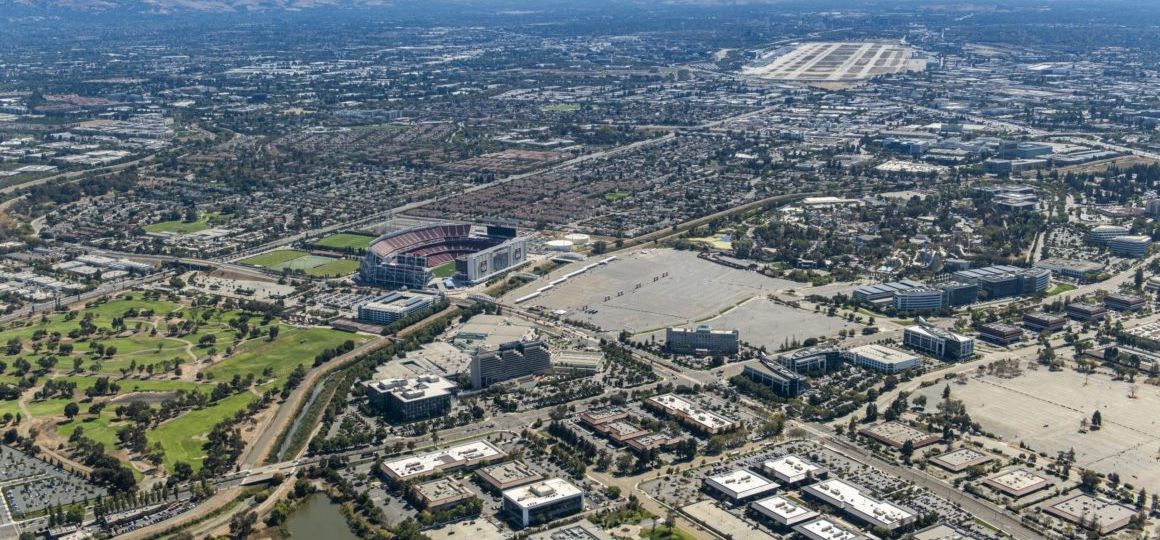
Santa Clara population ticks up as rest of region drops
By Joseph Geha May 9th 2023, San Jose Spotlight
All but four Santa Clara County cities lost residents over the last year amid a continuing trend of statewide population drop driven by declining birth rates, elevated deaths and people leaving the state.
While San Jose, the state’s third largest city, lost a half-percent of its population, dropping to 959,256 people, Santa Clara, the county’s third-largest city, added the most to its population at 1.54%. That translates to a little more than 2,000 people, up to 132,476, according to a population and housing estimates report from California’s Department of Finance.
The annual report shows changes from Jan. 1, 2022, to Jan. 1, 2023.
The four Santa Clara County cities that added population—Santa Clara, Monte Sereno, Gilroy and Milpitas—are among the jurisdictions that added the most housing stock by percentage in the county, in a year with the highest overall increase in housing statewide since 2008, according to the state’s department of finance.
Santa Clara added 2.6% to its housing stock, 1,370 total homes, with about 90% of those coming in the form of multi-family housing such as apartment complexes. The city’s numbers are more than 2% higher than San Jose, which added a half-percent to its stock with 1,686 homes.
Even as home prices and rents remain high, experts said supply and demand can still drive population growth where more housing is produced.
“If we build it they will come,” Russell Hancock, CEO of regional think tank Joint Venture Silicon Valley, told San José Spotlight. “That means doing things like density, infill and going vertical. Santa Clara is a city that has been willing to do that, even more than its neighbors.”
Santa Clara Councilmember Suds Jain said the city has historically been a great place for large employers, like Nvidia and Intel, and hosts dozens of data centers due to its cheaper city-owned electricity utility.
But the city fell behind in creating housing to match its employment. There are roughly 25,000 homes or apartments in the works in Santa Clara over the coming years, Jain said.
“San Jose is not particularly eager in building housing, but Santa Clara needs to build more housing to reduce climate impacts of people commuting,” Jain told San José Spotlight.
He said Santa Clara needs more housing to help push down prices, with one-bedroom apartments renting for as high as $3,500 a month.
“We will easily meet our (state housing goal) numbers overall, but the challenge is trying to get those extremely low-income units,” Jain said.
Growth could return
Santa Clara’s growth isn’t limited to 2022. It’s the fastest-growing city in the Bay Area with a population of 50,000 or more since early 2020, according to reporting by the San Francisco Chronicle.
Sunnyvale, Santa Clara’s neighbor, stayed almost flat in population, losing 0.03%, while adding about 1% to its housing stock. Monte Sereno added just 28 new homes, but that accounts for a 2.1% increase in the small, wealthy town, which also saw a 1% increase in population.
Gilroy added 1.7% to its housing supply, about 306 homes, while increasing population by about 0.62%, to 60,078 residents. Milpitas increased its population just 0.25% to 81,067, while increasing housing stock by about 0.7%, the report said.
Derrick Seaver, CEO of the San Jose Chamber of Commerce, said the lack of affordable housing is playing a big role in the region’s overall population decline, and elected leaders need to pay close attention.
“Nothing against Santa Clara, but when we’re celebrating 1.5% gain, that’s a problem,” Seaver told San José Spotlight. “Based on our historical population growth and where we’ve been, I think we should be aiming considerably higher than that.”
He said there is huge demand for high-skilled employees in the region, and unemployment remains low. The unemployment rate in Silicon Valley in March was at 3.1%, according to an analysis by Joint Venture. So if cities and the region can significantly add to its affordable housing stock, population gains will likely follow.
“Right now we’re just falling behind on that,” he said.
The falling population in much of the region and the state are not new. In addition to declining birth rates and increased deaths, the state and Silicon Valley saw fewer people coming to the area for work under harsher immigration policies during former President Donald Trump’s administration, as well as the rise of remote work prompted by the coronavirus pandemic.
While the state lost about 0.35% of its population overall in the past year—about 138,400 people—that decline is slowed from prior years. Hancock is optimistic that much of the decline in population is tied to the pandemic, and different trends could emerge soon, in part driven by continued economic strength in the region.
“We also have different administration in the White House, and a different tone is being set,” Hancock said. “As Silicon Valley’s economy moves into new fields like artificial intelligence, I think you’ll see economic growth, I think that will be accompanied by population growth.”
Full article by Joseph Geha: https://sanjosespotlight.com/santa-clara-population-ticks-up-as-rest-of-region-drops-silicon-valley-bay-area-san-jose-california-ca

